Sometimes if you want something, you just got to do it yourself. Cracked wheat bread is one of my favorite types of whole grain bread and only on a rare occasion can I find it in my area. So I either have to be satisfied with the occasional find or learn to make it yourself. Then so be it, I’ll make it myself.
Yeast breads can be time consuming and a bit intimidating, but not necessarily difficult. I would recommend working with a well written recipe a couple of times to get the hang of the process. I find it easy to fit into my schedule when I am spending a day at home.. Some people like to work breads totally by hand and some like to utilize their trusty stand mixer. I do a combination. I mix it and start the kneading process in a stand mixer and finish it by hand. This works for well for me and I can clean a little while the kneading process gets started.
I love the nutty, slightly tangy flavor with a touch of sweetness from honey and molasses. It makes an excellent loaf for slicing or shaped into rolls for dinner. This bread has a lovely crunch to it especially when toasted which is how I have it in the morning with jam.
Bulgur can be substituted for the cracked wheat in this recipe. What is the difference since they are both essentially cracked wheat? Whole wheat berries cracked in their raw form is called cracked wheat. Bulgur is partially hulled whole wheat kernels that have been soaked and steamed, dried and then cracked. Bulgur has a longer shelf life because of the precooking than cracked wheat. Even though they sound very similar they are not necessarily interchangeable in all recipes. Both of these products can be found in your natural food section or in middle eastern markets. Both grains are a very nutritious and high in fiber.
Personally, I would recommend that everyone try to make at least one yeast bread at home. Odds are that it won’t come out perfect the first time but will be delicious anyway. There is a certain satisfaction to making homemade bread and the aroma seems to summon everyone to the kitchen for that first warm slice with butter. Once you get the hang of it you will wonder why you were ever intimidated by bread making. It probably won’t be exactly like bakery breads (they have expensive equipment and experienced bakers) but the results can be delicious, healthier and easier on the wallet. What is better than good honest homemade bread?
How to Make Cracked Wheat Bread
Step 1: Prepare Cracked Wheat
- Place cracked wheat (or bulgur) in a bowl and pour boiling water over it.
- Let soak for about 1 hour until softened.
Step 2: Activate Yeast
- In a small bowl, mix the yeast with warm water and a pinch of sugar.
- Allow to sit for 7-10 minutes until bubbly and frothy (proofed).
Step 3: Mix Wet Ingredients
- Combine warm buttermilk, molasses, honey, and room-temperature butter in a separate bowl. Mix well to incorporate.
Step 4: Mix Dough
- In a large bowl (or stand mixer bowl fitted with a paddle attachment), mix whole wheat flour, salt, and sesame seeds.
- Add the proofed yeast and the buttermilk mixture, mixing until smooth (approximately 3 minutes).
- Drain cracked wheat thoroughly and mix into the dough.
- Gradually add all-purpose flour, ½ cup at a time, until the dough forms a ball and pulls away from the sides of the bowl.
Step 5: Knead Dough
- If using a stand mixer, switch to a dough hook and knead for 4-5 minutes until dough is soft and springy.
- If kneading by hand, place dough onto a floured surface, knead gently for about 5 minutes, adding minimal flour as needed to avoid sticking.
Step 6: First Rise
- Place dough into a lightly oiled bowl, turning to coat.
- Cover with plastic wrap or a damp kitchen towel.
- Allow to rise in a warm spot for approximately 1½ hours or until doubled in size.
Step 7: Shape and Second Rise
- Gently deflate dough and divide into two loaf pans or three round loaves.
- Place on greased loaf pans or parchment-lined baking sheets.
- Brush tops with melted butter, cover loosely, and let rise again for about 30 minutes.
Step 8: Bake Bread
Preheat oven to 350°F (175°C).
Bake bread for 35-40 minutes until golden brown and hollow-sounding when tapped.
Cool on wire racks before slicing.
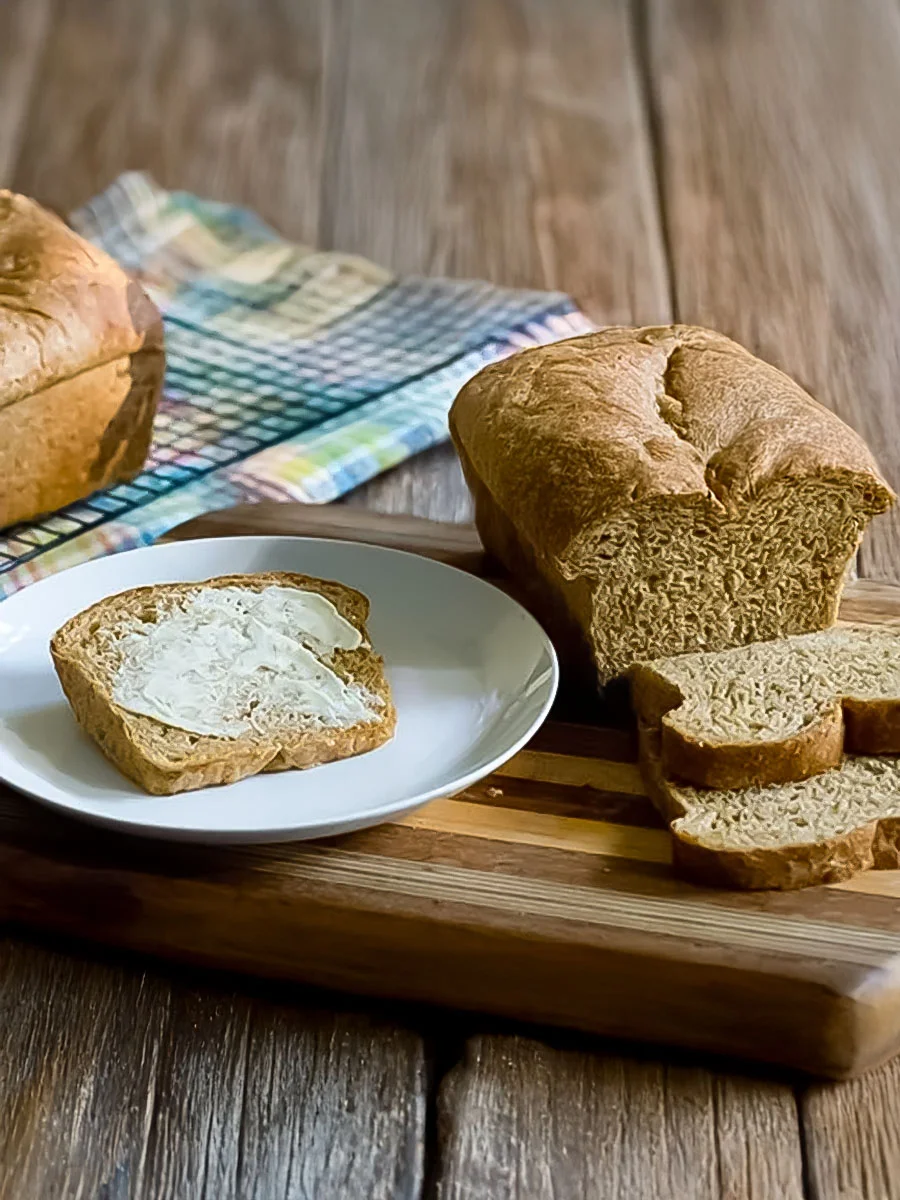
Frequently Asked Questions (FAQ)
Can I use regular whole wheat instead of cracked wheat or bulgur?
Cracked wheat or bulgur provides texture and chewiness. Regular whole wheat flour can substitute in flavor but won’t offer the same texture.
What if I don’t have buttermilk?
Make a simple substitute by mixing 1 tablespoon of vinegar or lemon juice with 1 cup of milk, and let it sit for 5 minutes before using.
Can I freeze this bread?
Yes, you can freeze this bread after cooling. Wrap tightly in plastic wrap and aluminum foil to maintain freshness. Thaw at room temperature.
How should I store leftover bread?
Store the bread at room temperature in an airtight container for up to 3 days or refrigerated up to a week.
Can I make the dough ahead of time?
Yes, refrigerate the dough after the first rise, then allow it to reach room temperature before shaping and baking.
What do I do if my dough isn’t rising?
Check the yeast’s freshness and water temperature (105-115°F). Warm environments (70-75°F) also help yeast activate properly.
Is molasses necessary, or can it be substituted?
Molasses adds sweetness and moisture. You can substitute honey or maple syrup, but molasses offers a distinct, richer flavor.
Can I add nuts or dried fruits?
Absolutely! Adding nuts, dried fruits, or seeds like flax or sunflower can enhance flavor and nutrition. Add them during dough mixing.
Why did my bread collapse while baking?
Overproofing or too much yeast can cause collapse. Be precise with rising times and yeast measurements.
Can I bake this bread in a bread machine?
Yes, follow your bread machine’s guidelines for whole wheat bread settings and ingredients’ order.
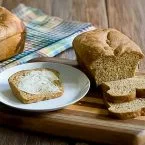
Baking with Grains: Cracked Wheat Bread
- Total Time: 3 hours 10 minutes
- Yield: 2 large loaves 1x
Description
This is a delicious and nutritious loaf made with softened cracked wheat, molasses, honey, and sesame seeds. It has a lovely chewy texture and slightly sweet flavor, just perfect for sandwiches or toasting.
Ingredients
Instructions
Step 1: Prepare Cracked Wheat
- Place cracked wheat (or bulgur) in a bowl and pour boiling water over it.
- Let soak for about 1 hour until softened.
Step 2: Activate Yeast
- In a small bowl, mix the yeast with warm water and a pinch of sugar.
- Allow to sit for 7-10 minutes until bubbly and frothy (proofed).
Step 3: Mix Wet Ingredients
- Combine warm buttermilk, molasses, honey, and room-temperature butter in a separate bowl. Mix well to incorporate.
Step 4: Mix Dough
- In a large bowl (or stand mixer bowl fitted with a paddle attachment), mix whole wheat flour, salt, and sesame seeds.
- Add the proofed yeast and the buttermilk mixture, mixing until smooth (approximately 3 minutes).
- Drain cracked wheat thoroughly and mix into the dough.
- Gradually add all-purpose flour, ½ cup at a time, until the dough forms a ball and pulls away from the sides of the bowl.
Step 5: Knead Dough
- If using a stand mixer, switch to a dough hook and knead for 4-5 minutes until dough is soft and springy.
- If kneading by hand, place dough onto a floured surface, knead gently for about 5 minutes, adding minimal flour as needed to avoid sticking.
Step 6: First Rise
- Place dough into a lightly oiled bowl, turning to coat.
- Cover with plastic wrap or a damp kitchen towel.
- Allow to rise in a warm spot for approximately 1½ hours or until doubled in size.
Step 7: Shape and Second Rise
- Gently deflate dough and divide into two loaf pans or three round loaves.
- Place on greased loaf pans or parchment-lined baking sheets.
- Brush tops with melted butter, cover loosely, and let rise again for about 30 minutes.
Step 8: Bake Bread
Preheat oven to 350°F (175°C).
Bake bread for 35-40 minutes until golden brown and hollow-sounding when tapped.
Cool on wire racks before slicing.
Notes
Yeast Activation: Ensure the water temperature is accurate (105-115°F) for proper yeast activation.
Dough Texture: Dough should be soft, springy, and slightly tacky, not sticky.
Avoid Over-Rising: Too long rising time can cause bread to collapse during baking.
- Prep Time: 2 hours 30 mins
- Cook Time: 40 mins
- Category: Bread
- Method: Baking
- Cuisine: American
Nutrition
- Serving Size: 1 slice
- Calories: 160
- Sugar: 5g
- Sodium: 220mg
- Fat: 4g
- Saturated Fat: 2g
- Unsaturated Fat: 2g
- Trans Fat: 0g
- Carbohydrates: 28g
- Fiber: 3g
- Protein: 4g
- Cholesterol: 10mg
Liked this? Take a look at some of our other fantastic baking recipes:
Easy Homemade Banana Loaf – The Ultimate Classic Recipe
Kubaneh – Yemenite Jewish Loaf
Ultra Soft Sourdough Sandwich Loaf
An Italian Classic: How to Make Ciabatta Bread
Rieska – Finnish Potato Flatbread







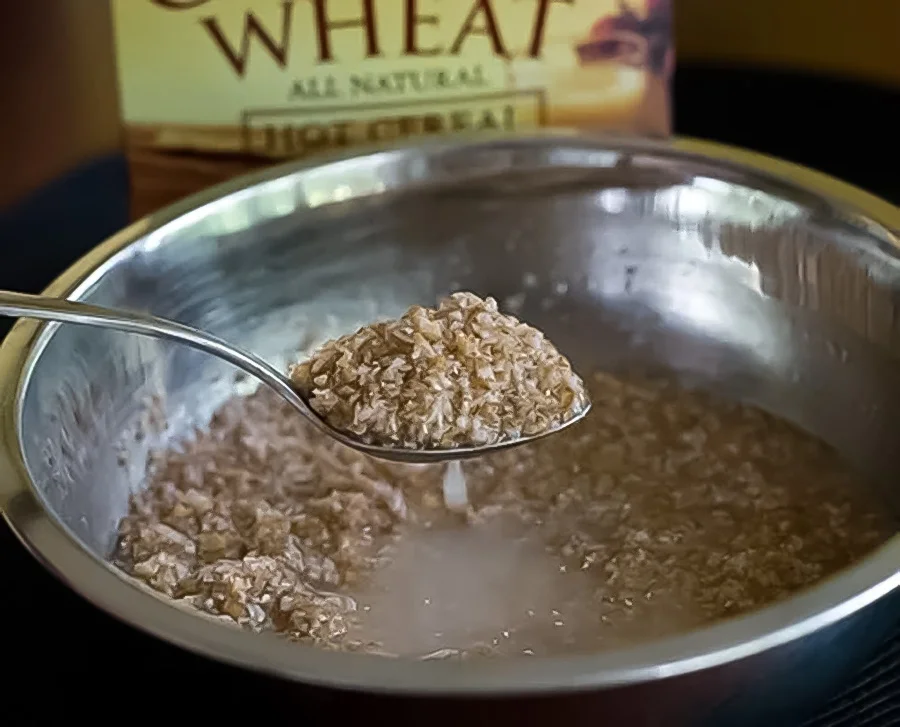
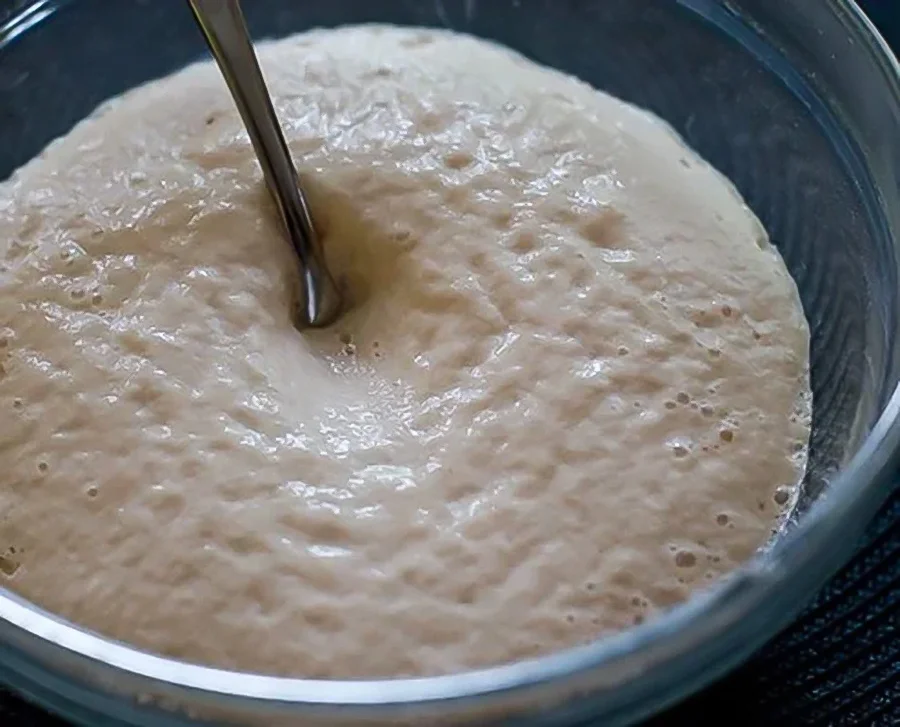
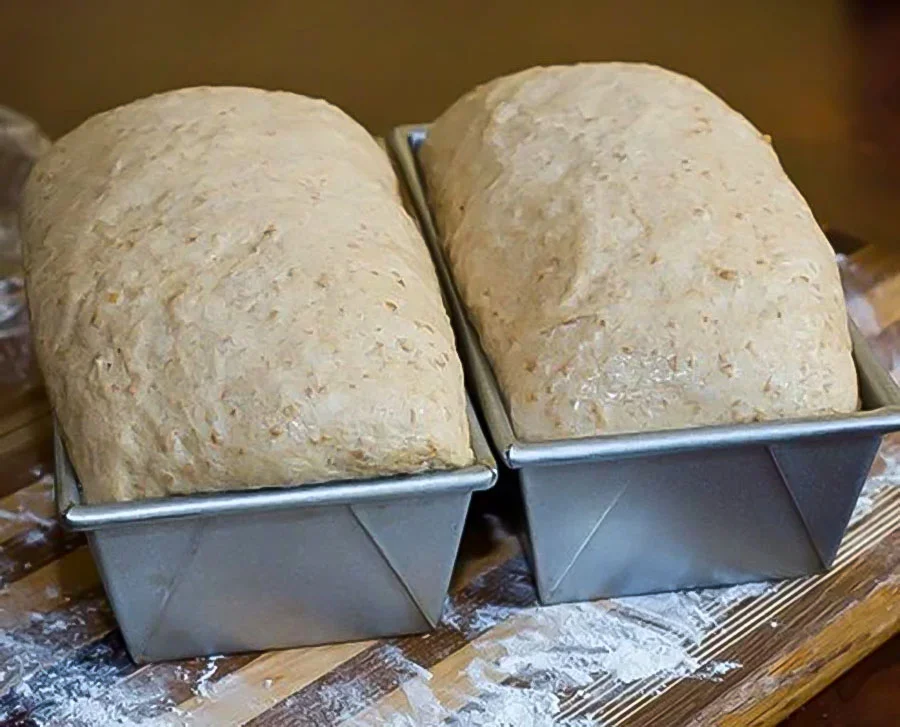






My favorite bread!!!
I made 1/2 recipe for 1 loaf. I used instant yeast and added directly with the whole wheat flour. I think I will increase the yeast to 2 tsp for 1 loaf (4 tsp for 2 loaves) as it was not a high rise. I used #3 bulgur. Wonderful loaf.
This is the best bread ever. No competition!
Made this twice this week, and both times were spot on. The family loves this bread for breakfast!!
Oh hell yeah this is so good. I am making this every week right now!!
Our favourite bread. Have not fed this to anyone who doesn’t swoon over it . I routinely make it as gifts. Thank you!
If you really love cracked wheat bread, and don’t feel like making your own, Franz Bakery in Portland, Oregon, fills the bill nicely. It’s priced right (I’ve seen loaves of it at their outlet store for around $2), tastes great, and really gives you that home made flavor that’s missing in most commercial bakeries.
This recipe is FIRE though!
I was a little sceptic to the sweetness, thought it might be too much for a lunch sandwich, but it was actually spot on. Toasted it and served with brie and prosciutto and it was absolutely delicious. Thank you!
I have baked this for the last month of quarantine! Amazing, have followed the recipe, I have doctored the recipe and it has always turned out, I adapted it for the Bread Machine just putting all the liquids in first, then dry ingredients then yeast, again always works out. Thank you.
Made this twice, first time it collapsed while baking, I think i overproofed. Second time it was perfect. Delicious too!
Do you have a preference or recommendation for the size of the cracked wheat to use. I’m trying to find cracked wheat online, can’t seem to find it in any grocery store in the area. Online, there is bulgur, coarse and fine. My inclination is to use coarse for a little more crunchy texture. Your thoughts?
Hi just letting you know this is my all time favorite bread recipe. I’ve love it and if i could make it firm enough I’d use it for sandwich bread, but the crumb comes out pretty lose as I’m not good a measuring honey. i tend to use the heavy handed MARK 1 eyeball, ha, ha. The one thing I’d really like is some nutritional info on the recipe. I know its good for you but then again i don’t really know how good. I’ve been making this particular recipe for several years know as it’s impossible to find cracked wheat bread in the store and I thought at one time i saw this recipe with nutritional info. Maybe I’m wrong but I’ll keep looking and of course it will not keep me making this wonderful bread
This recipe sounds exactly what I have been looking for. I think I just hit the jackpot!!! Making loaves today. Thank you.
Thank you for all the great instructions. I love this bread and your help will make it easier.
Sending a hug ?
My wife was preparing food with Syrians and bugler was used. Never heard of it before.
Made this today. I questioned the amount of salt, but have found in baked goods the amount called for is usually spot on. Not in this case. Everyone thought the final product was a tad bit too salty. WI’ll try it with a lesser amount next time.
There is a chef on tv that adds the flour, except for a couple of cups. Adds the dry yeast right on top of the flour. Being sure not to put salt on top of the yeast. You all ready have the water in bowl. That way you don’t kill the yeast with to cold or to hot of water.
Mine came out a little dense, but taste was delicious. Have to try again.
I’m going to try this recipe. I’m South African by birth and really miss the natural breads I took for granted there. Now I live in the States, and for the life of me, I cannot get used to the local bread. Even the so called home baked breads available in the grocery store departments are all so over processed and heavy. I hate it when biting into a sandwich, the bread instantly becomes pasty and your fingers leave indentation in the bread sometimes even going through the bread and you find youself gripping the meat etc. I guess thats why most immigrants refer to it as being pastety/paper bread. The Fiesta home bakeries in Houston, make a French Country bread that is closest to it, and I’ve run into many Europeans who specifically go to Fiesta to buy their bread there. I just want to make my own now. Excited to get started. Yummy!
I came across this because I can’t find cracked wheat or the cereal which I use in a bread machine recipe. So I used bulgur from the health food store and the results were great! I am glad I searched. Thanks I will be back.
Please help! I wanted so badly for this bread to work but I had such troubles with it rising. My first rise took double (3 hours) the suggested time for it to double in size and the second rise barely even occurred. I used fresh jarred yeast and allowed the bread to rise in the oven with the oven light on. Any thoughts/suggestions? Thanks!
This is the most frustrating part of bread making is when the rise does not work out as expected so I know your frustrations. First I would consider the temperature of the water that I activated the yeast in, too hot and you usually kill all yeast or too cold and the yeast activates much more slowly (which may account for the very slow rise which actually develops more flavor). With this recipe, I usually have more trouble with it rising too much and have to be careful about the amount of time that it rises. Double check your yeast by just proofing 1/2 a teaspoon of it in 1/4 cup warm water (105 to 115) with a pinch of sugar. After a minute or two bubbles should be appearing and after 10 minutes you should have a good surface foam (yes a little like beer but uneven and milky looking). If your flour was cold (I keep some of mine in the freezer or frig) that could have effected it. Salt can effect yeast which is why it is mixed into the flour before mixing with the yeast mixture but without it the bread will be very bland. Altitude can cause problems which I do not have experience with. Not all flour is the same but is usually not the problem, I used King Arthur unbleached AP flour. When the yeast for whatever reason doesn’t work out perfect and I usually go ahead and bake the bread even though it was not a text book rise but still rose to some degree. The bread may be denser if it doesn’t rise correctly but usually still has great flavor. I assume that you have already baked it or tossed it (I hope not) and am curious how it turned out. I wish I could be more help but yeast can be finicky at times and it is hard to pin point the reason why. I really do hope it turned out for you.
The recipe is not clear when to add the yeast mixture and the best time is with the other liquids because it blends well even though anytime before the last couple of cups of flour is added. I am sorry that this is not more clear – add it with the other liquids.
You don’t need to keep the oven light on the whole time…just until the oven warms up. Many oven lights radiate a lot of heat and I suspect your dough got too hot…hence hardly any second rise.
The first rise should not take 3 hours in a warm oven though…as suggested, maybe your liquids were too warm.
This recipe is just fantastic, can wholeheartedly recommend it.
I would love to try the breads from Africa. I love that you actually had your own wheat ground. Grains really can be different from different regions and even just within the US.
I would try a non dairy milk like almond, rice or coconut milk with a teaspoon of lemon juice. You could also just use water. I would use less than a cup maybe starting with 2/3 to 3/4 of a cup. This will not have the exactly the same results because buttermilk adds tang, leavening and milk proteins but that is ok. Most bread are made without milk anyway. It might take a little experimentation before it is just the way you like it.
I would love to know how it goes. Thank you for stopping by!
Dear Laura,
We lived in africa for many years, and had the most delicious breads there. I know that the flour was different. We actually took wheat to the mill to have it ground. I am hoping to be able to come up with a similar loaf, but am living with a son who’s little boy is allergic to dairy. Do you have any suggestions for substitutions for buttermilk? Thanks.
Loretta
Gorgeous loaf…I discovered bulghur a little less than a year ago. I love the idea of using it in a bread. Wonderful :)
Thanks Alisha. I was actually surprised these were cereal products not just grains to used in cooking and baking!
I agree with you there is nothing quite like homemade bread. The feeling you get from baking your first bread is so exhilarating. I love bulgur and baking bread with molasses, but never tried it together. Can’t wait to give this recipe a try. Thanks Laura!
At first glance, I thought the combination of the buttermilk and molasses was interesting, but it works well. In the summertime I hesitate to turn on the oven, but I think it rises so much better! Thank you, Nancy.
Ohh what a great idea, I wouldn’t have thought to make bread with cracked wheat… I recently tried making bread with baking soda to make it rise instead of yeast and was pleasantly surprised, and by the look of it, this will be another great bread surprise! Now to get my hands on some cracked wheat…
Thank you. Do give it a go, I don’t think you will be disappointed. I hope it is not too difficult finding cracked wheat in your area. Enjoy!